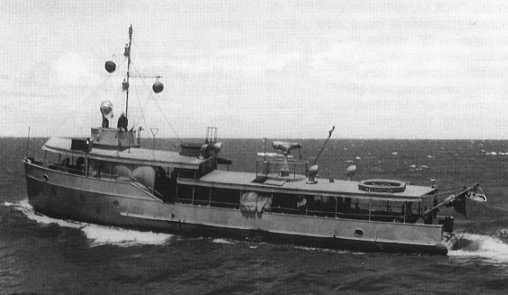Built as small ships to transport people and small amounts of cargo for the government, were built with the idea to convert them back to merchantile service during peacetime. Two escaped to Australia in March 1942 and one was completed as anti-submarinevessel for the Japanese navy.
| Histories |
| Rindjani |
Escaped to Australia March 3 to 10 1942 to Broom. Made anti-mine patrols from Fremantle and returned to the NEI postwar as a tugboat. |
| Merbaboe |
Escaped to Australia March 3 to 10 1942 to Broome. Operated from Fremantle and returned to the NEI postwar. |
| Smeroe |
Escaped to Australia March 3 to 10 1942 to Broome. Operated from Fremantle and returned to the NEI postwar. |
| Merapi |
Destroyed at dockyard, March 1942 |
| Slamat |
Destroyed at dockyard, March 1942 |
| Tjerimai |
Completed on August 4 1942 as Japanese vessel Cha 101. Sunk April 8 1945 SE of Celebes ( Sulawesi ) by American aircraft. Other sources say she was commissioned as Cha 118 ( launched and completed on November 15 1943 and June 15 1944 respectively ) and heavily damaged on November 6 1944 by an air attack of 18 squadron RAAF in Waingapoe. Found in 1945 and used as a floating pier in Tandjong Priok. |
![]()
![]()

![]()